
This website contains multiple games for kids, ranging from ELA to Math.
- Subject:
- English Language Arts
- Media Studies
- Science
- Material Type:
- Game
- Date Added:
- 03/25/2019

This website contains multiple games for kids, ranging from ELA to Math.
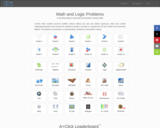
This site offers math and logic problems for ages 5 and up to adult.

A collection of lessons, calculators, and worksheets created to assist students and teachers of algebra.
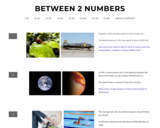
The inspiration for this site came from John Allen Paulos' book Innumeracy. From it Fawn Nguyen took the mathematical fun facts, etc. and created middle school mathematics critical thinking problems that relate to ratios and proportional reasoning and require students to compare stuff and really get them thinking.
Here's an example:
Tortoises have the longest lifespan among vertebrates, about 200 years.
A fruit fly's lifespan is about 45 days.
If we scaled both lifespans down so that a tortoise's 200 years is now 1 day, then what is the fruit fly's lifespan, in seconds?
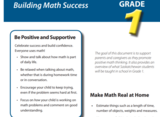
A series of pamphlets has been developed with the goal of supporting parents and caregivers as they promote positive math thinking in the home. The printable pamphlets, developed in collaboration with sector partners, also provide an overview of what students will be taught in school in each of grades 1-9, based on Saskatchewan curricula.
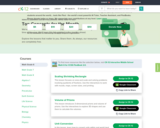
Excellent Interactive Lessons AND Assessments for All Levels of Math for Teachers and Students

Get your students coding in no time!
CodeMonkey is a fun and educational game-based environment where kids learn to code without any prior experience. After completing CodeMonkey's award-winning coding courses, kids will be able to navigate through the programming world with a sense of confidence and accomplishment.
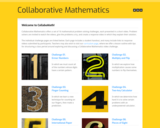
This website has various video challenges with accompanying PDF's for student use . Students are able to post their own videos of how they solved the challenge, and take a look at how others solved it as well.

Counting Collections is an important mathematical routine that students or families can do with very little guidance at home. Teachers could make kits with available resources for use at home, or send suggestions for commonly found objects that families could use for counting practice at home.
Counting Collections are just as described; they are collections of items that students count. Depending on your students, you will need several different kits. Kits hold several different collections of items.

Create additions, subtraction, multiplication and division worksheets to print or solve online
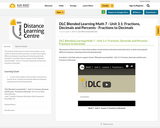
The purpose of this lesson is to learn that numbers can be written in decimal and fraction form, as well as learning the difference between repeating and terminating decimals.
Included is a YouTube video to support Grade 7 Blended Learning Math - Unit 3.1: Fractions, Decimals and Percents - Fractions to Decimals.

The purpose of this lesson is to explore using benchmarks to order and compare fractions and decimals.
Included is a YouTube video to support Grade 7 Blended Learning Math - Unit 3.2: Fractions, Decimals and Percents - Comparing and Ordering Fractions and Decimals.
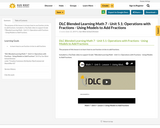
The purpose of this lesson is to learn how to use fraction circles to add fractions.
Included is a YouTube video to support Grade 7 Blended Learning Math - Unit 5.1: Operations with Fractions - Using Models to Add Fractions.
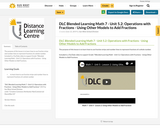
The purpose of this lesson is to learn how to use fraction strips and number lines to represent fractions of a whole number.
Included is a YouTube video to support Grade 7 Blended Learning Math - Unit 5.2: Operations with Fractions - Using Other Models to Add Fractions.
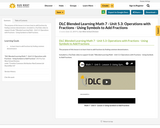
The purpose of this lesson is to learn how to add fractions by finding common denominators.
Included is a YouTube video to support Grade 7 Blended Learning Math - Unit 5.3: Operations with Fractions - Using Symbols to Add Fractions.
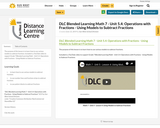
The purpose of this lesson is to learn how to use various models to subtract fractions.
Included is a YouTube video to support Grade 7 Blended Learning Math - Unit 5.4: Operations with Fractions - Using Models to Subtract Fractions.

The purpose of this lesson is to learn how to subtract fractions using common denominators.
Included is a YouTube video to support Grade 7 Blended Learning Math - Unit 5.5: Operations with Fractions - Using Symbols to Subtract Fractions.
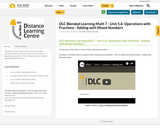
The purpose of this lesson is to learn how to add mixed numbers.
Included is a YouTube video to support Grade 7 Blended Learning Math - Unit 5.6: Operations with Fractions - Adding with Mixed Numbers.
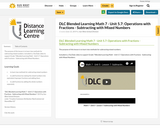
The purpose of this lesson is to learn two methods for subtracting mixed numbers.
Included is a YouTube video to support Grade 7 Blended Learning Math - Unit 5.7: Operations with Fractions - Subtracting with Mixed Numbers.
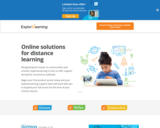
Explore Learning offers 3 programs to support students learning at home:
Gizmos (Grades 3-12) Get hands-on with math and science.
Gizmos are online simulations that excite curiosity and invite interaction. We’ve got over 400 Gizmos in our library covering topics and concepts in math and science for grades 3-12. Gizmos help students dig deeper into subjects and really understand challenging concepts.
Reflex (Grades 2-6) When they use Reflex, kids love math.
Adaptive and individualized, Reflex is the most effective system for mastering basic math facts in addition, subtraction, multiplication and division.
Full of games that students love, Reflex takes students at every level and helps them quickly gain math fact fluency and confidence. And educators and parents love the powerful reporting that allows them to monitor progress and celebrate success.
Science4Us (Grades K-2) It’s never too early to learn science!
Science4Us covers Inquiry, Physical Science, Life Science and Earth & Space Science with lessons specifically designed for K-2 students. The sessions have 1000’s of online and offline activities that can be completed in as little as ten minutes, and teach students using videos, interaction, poems, songs, and digital notebooks.